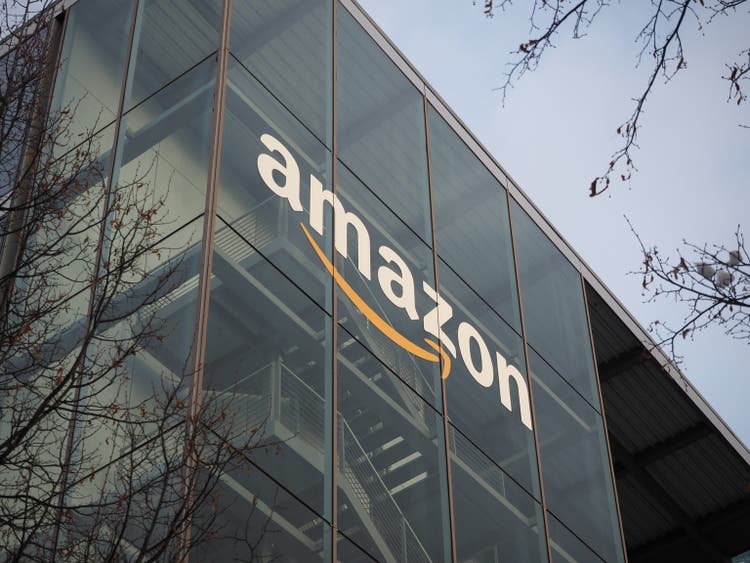Summary:
- Amazon reports after the closing bell on Thursday, February 1, 2024. Yoy revenue growth is expected at 11%.
- Calendar 2024 estimates for Amazon are currently expecting $3.63 in EPS on $635 billion in revenue for expected yoy growth of 35% and 11%, respectively.
- Since 2021, capex in terms of dollar growth has slowed considerably, which is exactly what Amazon needs to help margins.
- The online store and third-party sellers segments represent 64% of Amazon’s total revenue.
FinkAvenue
Amazon (NASDAQ:AMZN) reports after the closing bell on Thursday, February 1, 2024. Analyst consensus is expecting $0.80 in EPS on $166.2 billion in revenue for an expected yoy growth in EPS of – well – a lot, since the estimate is $0.80 and the actual from Q4 ’22 is $0.03 a share. Yoy revenue growth is expected at 11%. The December ’22 quarter will be an easy compare – looking at Q4 ’22 notes, online stores and AWS were challenged. Online store revenue fell 2% yoy in Q4 ’22 (unusual for Amazon) while AWS operating margins fell yoy, the first of three sequential quarters of declines in margins for AWS.
The point is, with a tough compare vs. Q4 ’22, the potential for a Q4 ’23 upside surprise is improved.
Calendar 2024 estimates for Amazon are currently expecting $3.63 in EPS on $635 billion in revenue for expected yoy growth of 35% and 11%, respectively.
Amazon’s all-time high was $188 per share in July ’21, and then again November ’21 and hasn’t been back to that level since.
The BIG change for AMZN in 2022 was revenue growth: up until 2022, AMZN went 20 years of +20% revenue growth, with one exception, and that was 2014’s +19%. In 2022 and 2023, Amazon saw 9% and 11% revenue growth, respectively, and forward estimates expect low- to mid-teens revenue growth going forward.
It looks like the years of 20% revenue growth for the retail and cloud giant are over.
The positive might be higher operating margins for Amazon.
To put Amazon in context, in 2021, Jeff Bezos fired Dave Clark, the long-time Amazon employee who had considerable responsibility over Amazon’s operations (logistics, distributions centers, transportation, etc.). Dave was supposedly fired for significant overreach in distribution centers and operations expansion (probably expecting the Covid volume to remain elevated for years), just as volume started to “normalize” after Covid and the pandemic. It probably didn’t help that the labor market recovered quickly, causing problems in hiring, and staffing and delivery.
Where this “overreach” shows up in Amazon’s financials, is tracking full-year capex on the cash flow statement:
- 2023: on track for $65-70 billion for full-year capex
- 2022: $63.6 billion
- 2021: $57.7 billion
- 2020: $42.1 billion
Covid strikes:
- 2019: $18.9 billion
- 2018: $13.9 billion
- 2017: $11.3 billion
- 2016: $6.8 billion
It took Amazon 4 years – from 2016 to 2019 to triple capex and then in just 1 year, capex tripled again from $18.9 to $42.1 billion, and Amazon’s capex has grown 50% in the last two years from there.
Since 2021, capex in terms of dollar growth has slowed considerably, which is exactly what Amazon needs to help margins.
The old Jeff Bezos model from 2010 to 2019 was to hit the gas, expand aggressively, crush margins for a few quarters, back off a little, let revenue growth continue to grow at 20% and then generate big upside surprises in cash flow and in operating income.
What the heightened capex spending did was crush trailing twelve-month free-cash flow, which went 8 consecutive quarters – from 9/21 to 6/23 – with negative free cash flow generation.
That doesn’t go unnoticed by investors.
Amazon’s operating margin history (trailing):
4-quarter: 8.06%
12-quarter: 6.71%
20-quarter: 7.15%
40-quarter: 5.79%
Amazon summary: Trading at a 60x multiple for expected ’23 EPS and a 45x multiple for expected ’24 EPS, Amazon is rarely cheap on a P/E basis, but the positive is that the company is coming out of a punishing period after Covid, and looks to be in store for a period of slower revenue growth, but possibly permanently higher margins, and better free cash flow. The internal spreadsheet value on Amazon is roughly $250 per share, while Morningstar has an intrinsic value on Amazon around $155. Averaging the two fair value estimates, results in a $200 per share round number valuation for Amazon.
The online store and third-party sellers segments represent 64% of Amazon’s total revenue. Over the last 9 quarters, the online store (essentially ecommerce) has averaged just 1% revenue growth.
Investors should be looking for better revenue growth in ecommerce (the third-party seller service has seen fairly healthy and stable revenue growth in the mid-teens since the stock peaked) while AWS revenue growth has slowed from 33% in the June ’22 quarter to 12% last quarter.
Amazon is still coming out of the Covid disruption period, but investors will undoubtedly like to see faster revenue growth in both the online store and AWS.
None of this is advice or a recommendation. Past performance is no guarantee or suggestion of future results. Investing can involve loss of principal. Capital markets can change quickly, for both the good and the bad. Readers should gauge their own comfort with stock market volatility and adjust their portfolio accordingly.
Thanks for reading.
Editor’s Note: The summary bullets for this article were chosen by Seeking Alpha editors.
